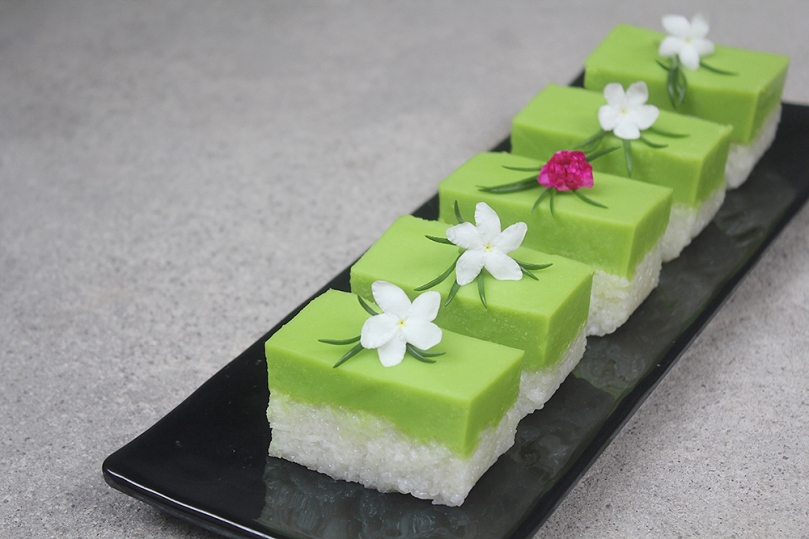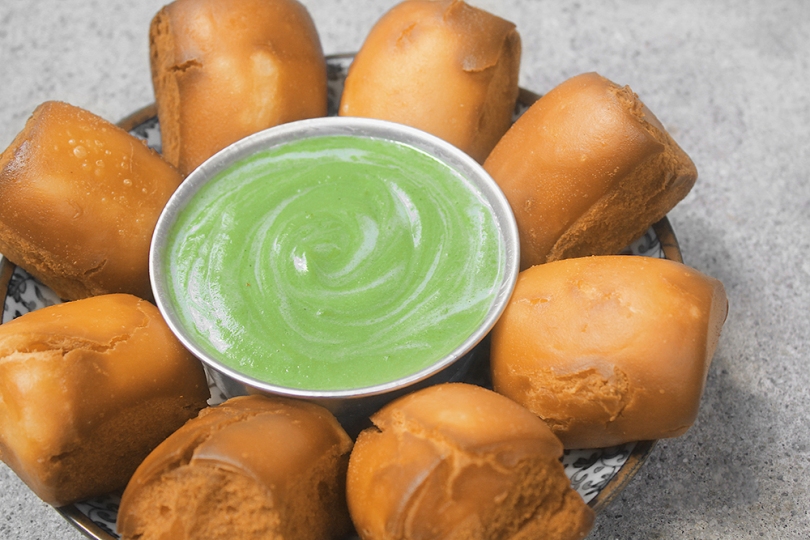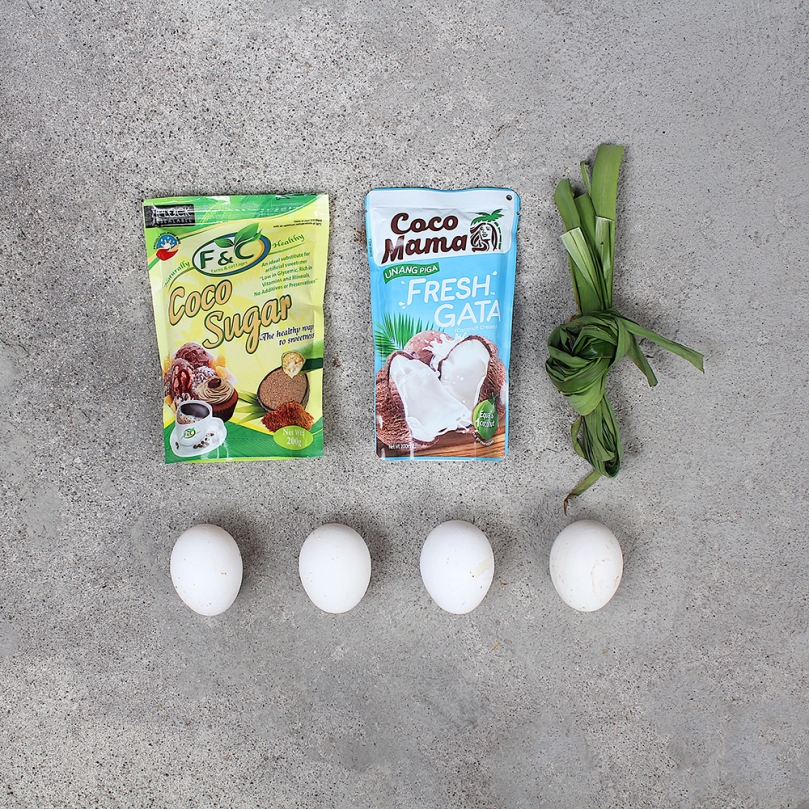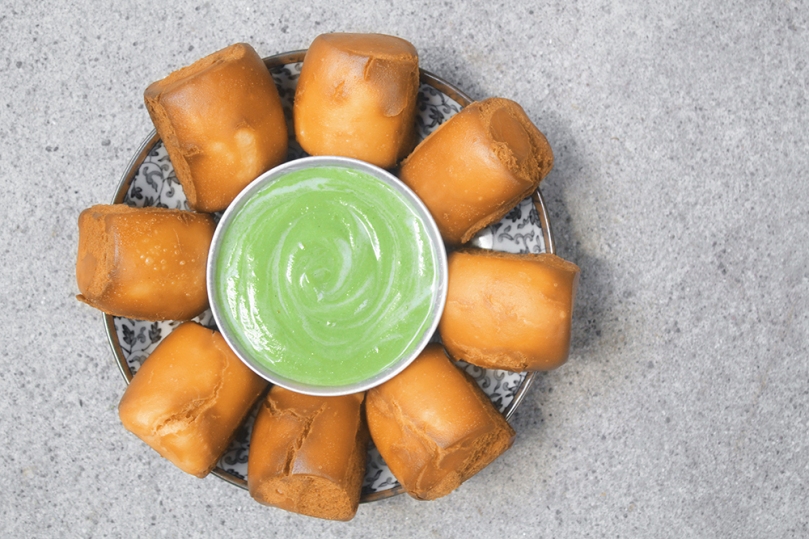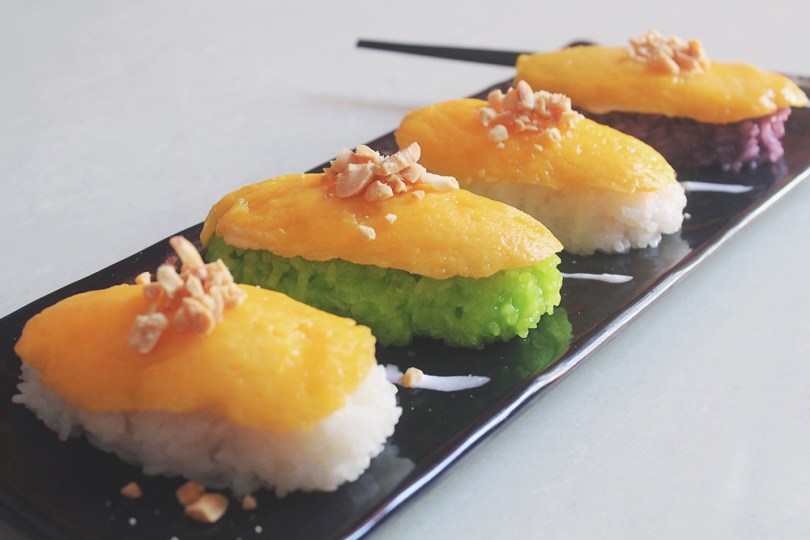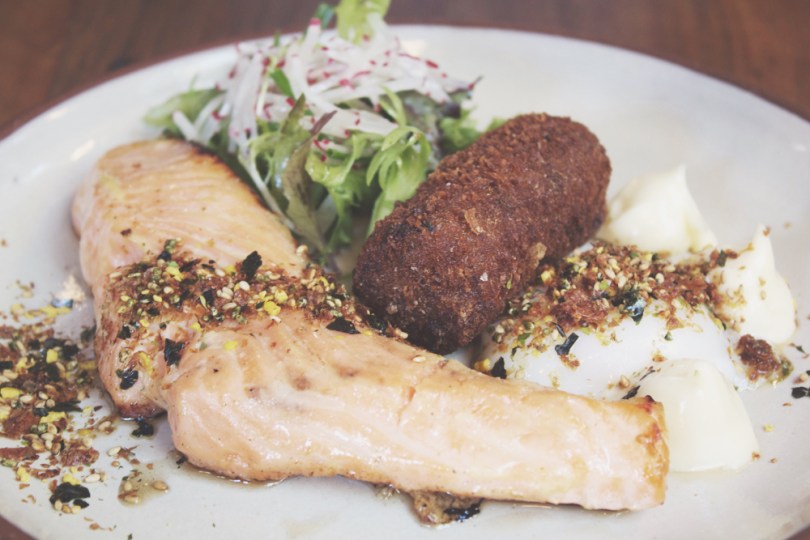Hello Everyone! The Bruneian traditional kuih (or kueh) is similar to many traditional cakes from around the region, such as in Singapore, Malaysia, and Indonesia. Nobody knows where the true origins of each traditional kuih came from in Brunei, but we know it all started from the water village – Kampong Ayer many decades ago. Back in the day, due to limited supply of resources, Bruneian cake makers would make use of natural elements and materials to prepare the cakes, such as wrapping with leaves, and making use of all parts of a coconut or palm tree.
Today, Bruneian kuih-kuih (plural for kuih) are still as popular as ever due to the nostalgia and historical heritage that it carries with every bite. Upon researching traditional kuih-kuih native to Brunei, I came across a website entitled ‘Brunei’s Traditional Sweet Treats You Must Try’. Kuih Kosui was amongst the list, but as it turns out, it is actually native to Malaysia, as most kuih-kuih are.
Kuih Kosui is a saucer-shaped rice cake that is flavoured with either pandan (screwpine leaves) juice or gula melaka (palm sugar). It is also known as Kue Lumpang in native Indonesian language, and is actually very similar to what we have closer to home here in the Philippines, known as kutsinta.

Kuih Kosui is very economical to make. The kuih is characterised by its ‘dimple’ in the middle of the cake, lightly sweet taste, soft, yet wobbly and slightly bouncy in texture. They are then topped with a slightly salted, grated coconut topping to give that extra layer of flavour with the classic sweet-salty combination.
Unlike with a traditional kutsinta recipe, the soft, wobbly, and bouncy texture of Kuih Kosui can be achieved without having to add any alkaline water. You just need the right combination of flours and you can still achieve its distinct chewy texture and dimples.
Before we dive into tonight’s recipe, please take the time to check out the original where I drew my inspiration from over on What To Cook Today by Marvellina.

PREP TIME 15 MINS | COOKING TIME 15-20 MINS | MAKES 14 CAKES
INGREDIENTS
- 1/2 cup + 1 tbsp + 1 & 3/4 tsp rice flour
- 2 tsp wheat starch
- 2 tsp cornstarch
- 1/4 tsp salt
For pandan flavour
- 2/3 & 1/4 cup boiling water (cooled for 15 minutes)*
- 1/2 cup white granulated sugar
- 1/3 cup pandan-infused water**
For coconut sugar flavour
- 1 & 1/4 cup boiling water (cooled for 15 minutes)*
- 1/4 cup coconut sugar
- 1 tsp white granulated sugar
For the topping
- Freshly grated coconut
- Pinch of salt
Notes:
- *Bring water to a boil and let it cool down for 15 minutes so it should feel lukewarm after that. The warm water will stabilize the starch/flour and they won’t separate when you steam. Make sure not to use boiling hot water as this will cook the starch/flour into a dough.
- **Place the pandan leaves and water into a blender. Blend until the leaves are chopped very finely. Pour contents through a fine sieve and press against it using a spoon to draw out any extra juice. Discard the leaves.
- Flour and starch measurements are for one recipe per flavour. If you want to make both flavours at the same time, make sure to measure out another set of flour and starch ingredients.
METHOD
- Topping: Add the pinch of salt together with the grated coconut and give it a good mix. Steam over high heat for 10 minutes and set aside once done.
- Kuih Kosui: Bring the water in the steamer to a boil and place the empty cups in the steamer. Allow them to heat up for about 5 minutes while you are preparing the batter This step is important to prevent the starch/flour from separating when steaming your rice cakes.
- Add the three different types of flour and starches, together with the salt, into a medium-sized mixing bowl. Depending on your chosen flavour, add the sugars, (then the pandan-infused water if making pandan flavour Kuih Kosui), and then the lukewarm water. Stir into a smooth batter until the sugars have dissolved.
- Pour the batter into the preheated cups, about 3/4 of the wall full and steam over high heat for 12-15 minutes (18 minutes if your cups are larger).
If your steamer cannot fit all the cups/batter in at the same time, work in batches. Do not pour the mixture into the remaining cups ahead of time and let them sit. The flour and starch mixture tends to settle at the bottom after a while. This is important otherwise your Kuih Kosui won’t turn out right.
- After steaming, remove the cups from the steamer and let them cool down for about 5 minutes. They can be easily removed by running a small rubber spatula around the edges to lift them up.
- Repeat with the next batch of batter. Make sure the steaming water is back to a rolling boil before steaming. Stir the batter first before pouring into the preheated cups.
- Once done, sprinkle with the prepared grated coconut topping. Serve and enjoy as an afternoon snack! Should make around 14 kuih-kuih.

If you ever happen to find yourself travelling through Brunei on your next travel adventure, drop by any day or night markets and you’re bound to come across this kuih and many others. If you’re lucky enough, you can even catch the vendor making them fresh on the spot for you.
The best time to find all the local snacks and kuih-kuih in one place is during the holy month of Ramadhan at various food markets. You can find a plethora of local and traditional goodies for you to try. Alternatively, you can also get these at the Gadong Night Market or Tamu Kianggeh throughout the year and more often the vendors would be more than happy to describe each one to you!
BON APPÉTIT
– Ally xx















